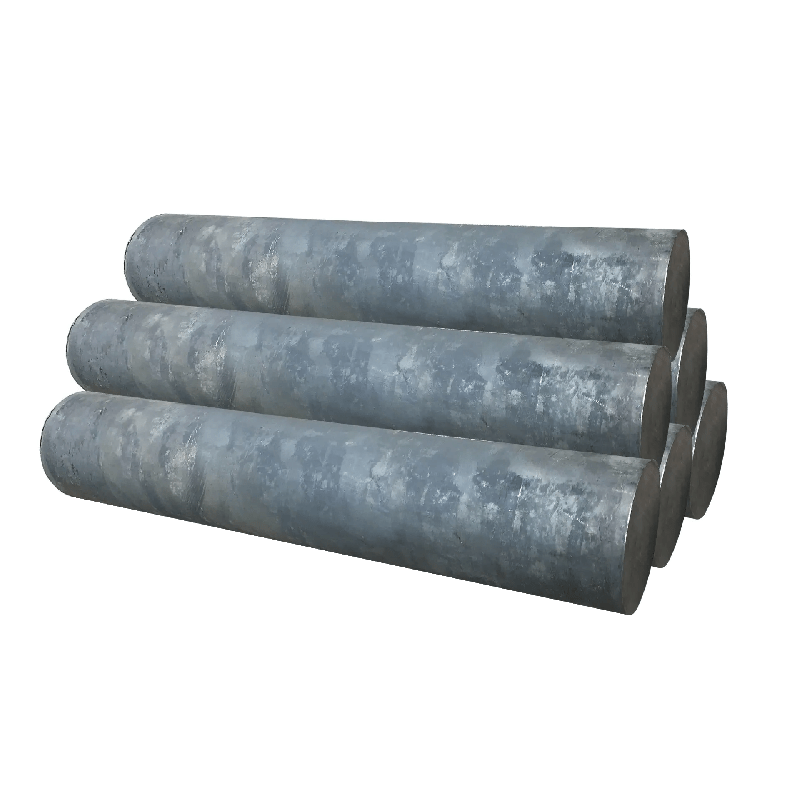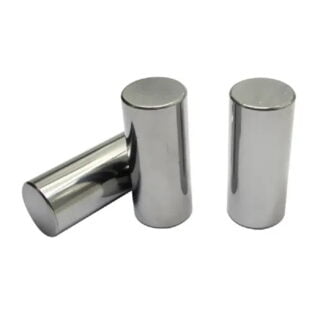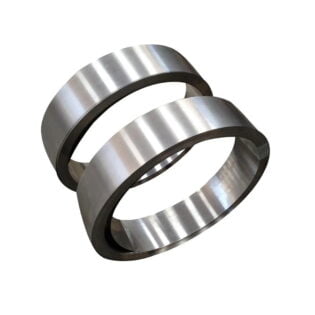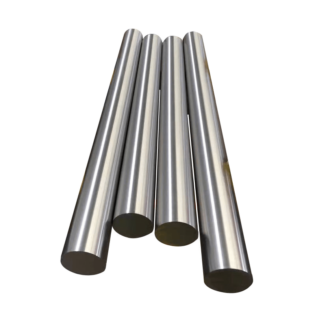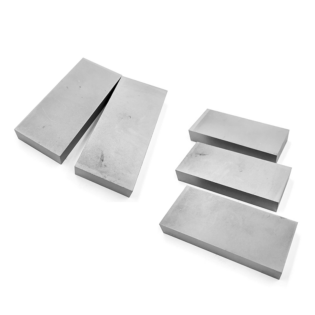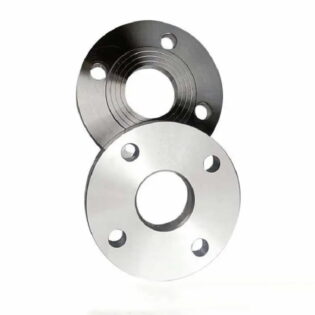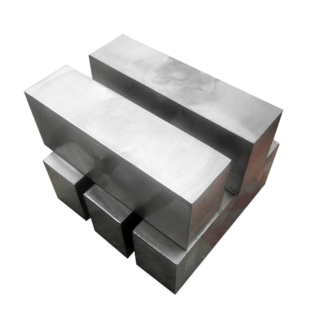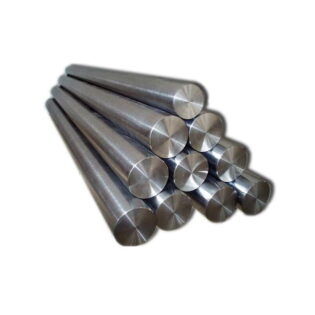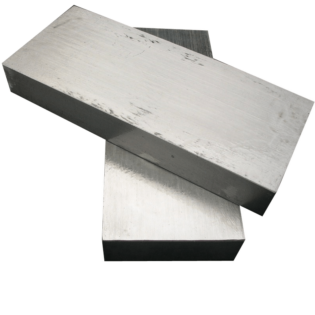Tiras, láminas y alambres de Hastelloy B-3 (níquel B-3), ASTM B333
APLICACIONES
Componentes de aeronaves, hornos y procesos químicos, panales y componentes de secciones de combustión de turbinas de gas.
DESCRIPCIÓN
Hastelloy® B-3 es una aleación de níquel-molibdeno con excelente resistencia a las picaduras, la corrosión y el agrietamiento por corrosión bajo tensión, además de una estabilidad térmica superior a la de la aleación B-2. Esta aleación también tiene una gran resistencia al ataque de la línea de cuchillo y de la zona afectada por el calor. La estabilidad térmica mejorada de la aleación B-3 minimiza los problemas asociados con la fabricación de componentes de aleación B-2. Esto se debe a la menor tendencia a precipitar fases intermetálicas nocivas en la aleación B-3, proporcionándole así mayor ductilidad que la aleación B-2 durante y después de diversas condiciones de ciclo térmico.
Hastelloy B-3 Superaleación a base de níquel
Hastelloy B-3 es una aleación de níquel-molibdeno con excelente resistencia a las picaduras, la corrosión y el agrietamiento por corrosión de estrés, la estabilidad térmica superior a la de la aleación B-2. La aleación Hastelloy B-3 es un nuevo miembro de la familia de aleación de níquel-molibdeno. Tiene una excelente resistencia a la corrosión al ácido clorhídrico a cualquier temperatura y concentración. Al mismo tiempo, también tiene una buena resistencia a la corrosión al ácido sulfúrico, ácido acético, ácido fórmico, ácido fosfórico y otros medios no oxidantes. Además, debido al ajuste de su composición química, su estabilidad térmica se ha mejorado considerablemente en comparación con la aleación original de Hastelloy B-2. La aleación B-3 tiene alta resistencia a la corrosión de la picadura, agrietamiento por corrosión del estrés, corrosión de cuchillo y corrosión en la zona de soldadura afectada por el calor.
En comparación con la aleación de Hastelloy B-2, la mayor ventaja de la aleación B-3 es que todavía puede mantener una excelente resistencia cuando se expone a temperatura media durante un instante. Esta exposición generalmente ocurre regularmente durante el tratamiento térmico del procesamiento. Cuando se expone a una temperatura de 700 ° C por un corto tiempo, la aleación B-2 es muy fácil de fragmentar, mientras que la aleación B-3 exhibe una resistencia significativa a la fragilidad y puede hacer esta exposición hasta varias horas. Esto proporciona una gran comodidad para que la aleación se convierta en piezas complejas, como dispositivos de formación. La aleación Hastelloy B-3 se puede utilizar para todos los propósitos de la aleación B-2 anterior. Al igual que la aleación B-2, Hastelloy B-3 no se recomienda para su uso en entornos donde existen sales trivalentes de hierro y cobre divalente, porque estas sales causarán daño de corrosión rápidamente. Cuando el ácido clorhídrico entra en contacto con el hierro y cobre, reacciona químicamente con sales de hierro y cobre.
Hastelloy B-3 Composición química:
| Ni | Mes | Fe | C | Co | Cr | Minnesota | Y | usted | W | Alabama | Con |
|---|---|---|---|---|---|---|---|---|---|---|---|
| 65.0 min | 28.5 | 1.5 | 0.01 máx. | 3.0 máx. | 1.5 | 3.0 máx. | 0.10 máx. | 0.2 máx. | 3.0 máx. | 0.50 máx. | 0.20 máx. |
Hastelloy B-3 Propiedades mecánicas:
- Resistencia a la tracción (RM N/mm2): ≥ 760
- Resistencia al rendimiento (RP0.2N/mm2): ≥ 350
- Alargamiento (A5%): 40
Ventaja:
- Controle el contenido mínimo de hierro y cromo para evitar la formación de NI4MO de fase β
- Excelente resistencia a la corrosión para reducir el entorno
- Excelente resistencia al ácido sulfúrico de concentración media y muchos ácidos no oxidantes
- Muy buena resistencia al agrietamiento por corrosión por estrés por reducción de iones de cloruro (SCC)
Hastelloy B-3 (N10675) Soldadura y procesamiento:
1. Análisis de material:
Las propiedades mecánicas de Hastelloy B3 (N10675) Hoja de Hastelloy en estado de solución sólida: a medida que aumenta la temperatura de calentamiento, su resistencia a la tracción, resistencia al rendimiento y un módulo elástico disminuirá, mientras que la alargamiento, el coeficiente de expansión térmica, la conductividad térmica y el calor específico aumentan ligeramente; y con el aumento de la tasa de deformación en frío, la dureza, la resistencia a la tracción y el aumento de la resistencia al rendimiento, y la alargamiento disminuye.
2. Características de formación: después del análisis, las características de formación de Hastelloy B3 incluyen principalmente:
- El material Hastelloy B3 tiene una alta tasa de alargamiento, que crea condiciones favorables para la formación de frío.
- El material de Hastelloy B3 es más difícil que el acero inoxidable austenítico, y tiene una tendencia más obvia al endurecer, por lo que necesita más presión durante la formación en frío o la formación paso a paso.
- Cuando la tasa de deformación de formación de frío del material Hastelloy B3 es inferior al 10%, no afectará la resistencia a la corrosión de las partes procesadas, pero en el proceso de soldadura, la existencia de estrés residual puede causar grietas calientes en la soldadura. Por lo tanto, para las piezas de trabajo que necesitan ser soldadas en la etapa posterior, el efecto del estrés residual debe eliminarse tanto como sea posible.
- La formación fría severamente deformada aumentará la relación de rendimiento del material Hastelloy B3 y aumentará la sensibilidad de la corrosión y el agrietamiento del estrés. A menudo se usan procesos de tratamiento térmico intermedio y final.
- El material Hastelloy B3 es muy sensible a los medios oxidantes y el azufre, el fósforo, el plomo y otros metales de bajo punto de fusión a altas temperaturas.

